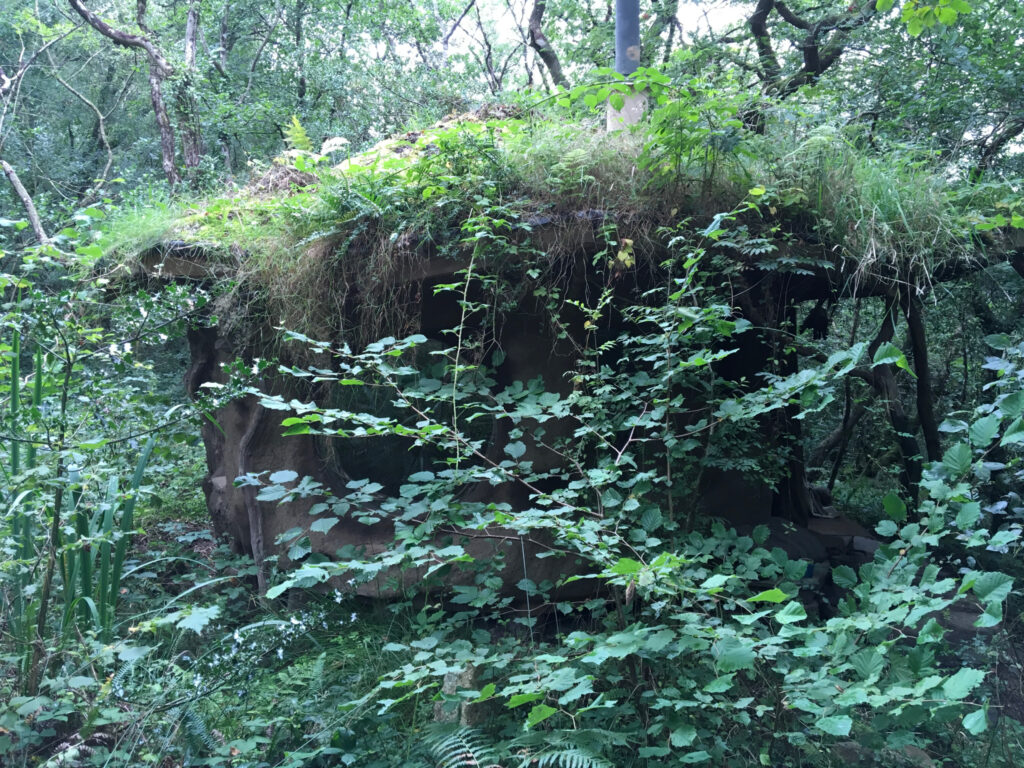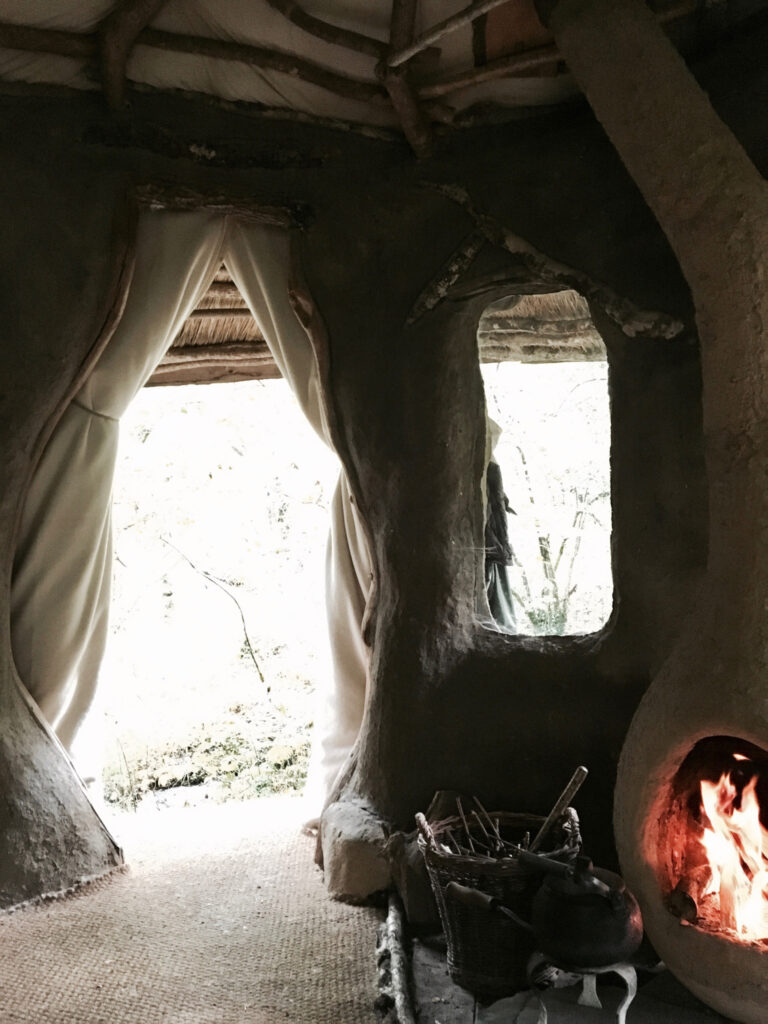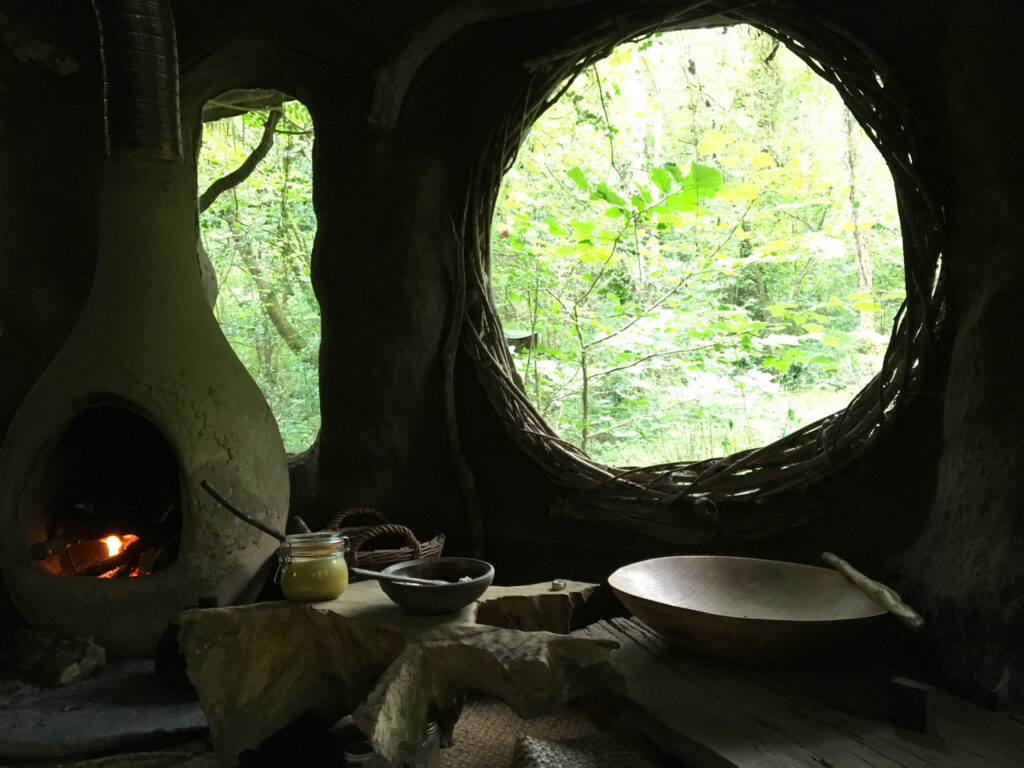I built my little woodland home as a place to live as simply and gently as possible on the land, in close contact with the elements, held in the earth’s wild embrace.
My woodland abode is a little round hut nestled between two singing streams within a small natural clearing in a pocket of Welsh rainforest.
The clearing is encircled by gnarly oaks, hollies, hazels and rowans, beyond which the woods spread out all around in every direction—a profusion of trees, plants, fungi, insects, birds and animals all in the throes of the great wild party that feels like it’s been going on here, uninterrupted, since forever.
The floor of the clearing is strewn with bilberry bushes, ferns and moss-covered rocks.
In summer the air is with rich verdant scents and filled with birdcalls, the buzzing of insects, and the lively burbling of the two streams tumbling over mossy rocks, while the sun’s light filtering through the lush leafy canopy is washed warm green.
In winter the place feels like an abandoned palace, the bony architecture standing stark and mostly empty save for a few remaining inhabitants, furtive in the drab quietude.
But year-round, beneath it all, there’s a sense of vibrant stillness and peaceful silence, with always a hint of elves whispering somewhere just out of sight.
Yes, this place is entirely wild–self-willed–and deeply magical.
And in the middle of the clearing, a little chimney puffing woodsmoke into the breeze sticks up through a conical roof covered in moss and honeysuckle, ivy, ferns, brambles and many more woodland plants.

At the eaves the ivy and honeysuckle trail over the edge towards their friends climbing up from the woodland floor.
Beneath its green roof and leafy fringe the hut smiles a muddy-toothed greeting.
It’s like something from out of a fairy tale, appearing to have sprouted organically from the earth itself or from some woodland nymph’s wild imagination.
It’s tiny, circular, cute in a sort of furry way, almost more like a curled-up dormouse than a house.
Upon seeing it for the first time, the child of a visiting friend asked, quite seriously, “am I dreaming?” and began counting his fingers and toes to establish whether he was awake or not.
If you’d stumbled upon it by chance you’d be forgiven for wondering what species of mythical being might live in such a peculiar dwelling.
In many ways it does belong to the otherworld.
But, at the same time, it’s the most earthy little residence you could conceive, constructed almost entirely from the raw materials of the land.

There’s not a straight line in sight, only organic contours flowing along with the mood of the woods.
Its wall (it only has one wall, being round) is the same colour and texture as the forest floor.
The windows are round or curvy, and partly screened by the overhanging plants spilling off the roof.
The whole hut blends almost completely into its surroundings, barely to be seen from more than a few dozen feet away through the undergrowth in any direction.
There’s no tidy flower garden here, and no garden walls or fences.
There’s no gate and no paved pathway up to the front door—only the narrow ribbon of a track worn gently through the woods, with the occasional flat stone placed at a particularly muddy spot and some more just outside the entrance.
The door itself is made of wool-felt blankets, soft and warm, and is almost always strung open to let in the season.
There’s no place, in fact, where the woods end and the hut begins.
They roll right up to the yoni-shaped doorway and tumble inside in bosky scents, sounds, shapes and textures.

The built structure, along with its few items of furniture, is made almost entirely of materials gathered from the woods around.
Its roundness reflects the roundness of the horizon, the roundness of our eyes, that of the sun and moon, as well as so much else in nature.
It feels totally one with its wild milieu.
And so, stepping inside doesn’t feel like stepping out of the woods, but merely into a more fully sheltered part of them.
One is held in soft, cosy warmth and safety, like being hugged by someone who knows how to do it really well.
At the same time one is turned outwards towards the life of the woods, held in lively communion with the thrumming web all around.
Our bodies can relax and be at rest here while remaining fully connected to the elemental source of their aliveness.
Yes, it is a place of shelter but not separation, just like every other kind of creature’s home on the wild earth.








This reminds me of how when I was a child I used to crawl into a hole amidst the blackberry bushes (I lived in the Pacific Northwest where blackberries grow huge and lush) and feel so secure and connected there. Thank you for sharing your words and pictures of your woodsy home with us.